The first comprehensive museum exhibition of American artist Al Taylor (1948-1999), on view at the High Museum of Art through March 18, is a project long envisioned by curator Michael Rooks. As Rooks said in a recent interview, his interest in Taylor dates back to 1998, when he first encountered Taylor’s work while he was living and working in Hawaii. The current exhibition was over a decade in the making. It gives full attention to the scope and range of Taylor’s output from the mid-’80s―after he gave up painting and turned his attention to drawing, printmaking, and sculpture―through the late ’90s.
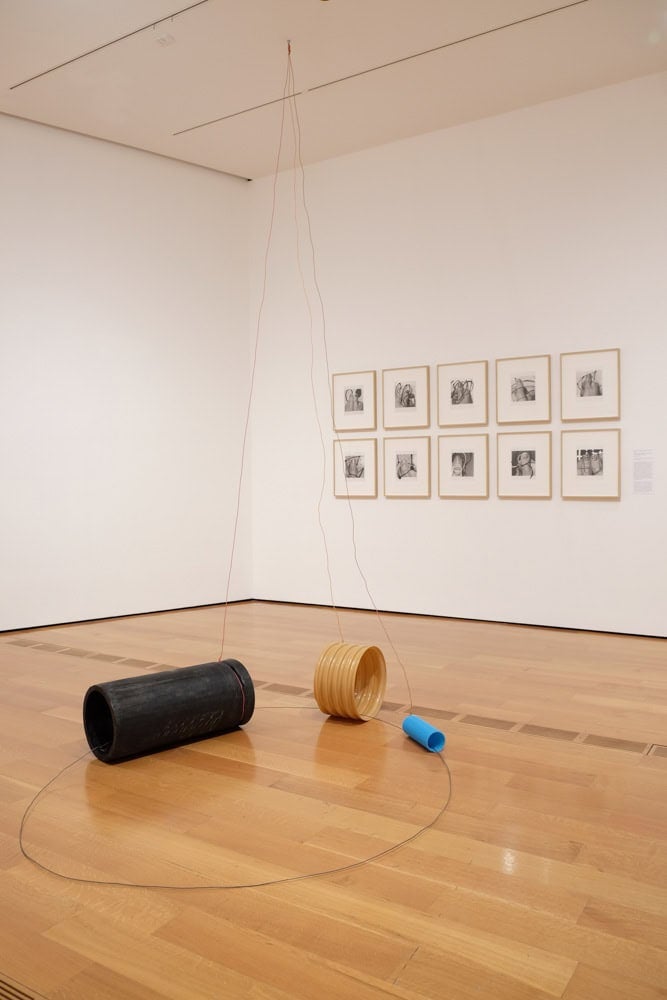
Born in Springfield, Missouri, and educated at the Kansas City Art Institute, Taylor lived and worked in New York for most of his career. Throughout his career, Taylor investigated perception, prompting the apt exhibition title: “Al Taylor: What Are You Looking At?” Taylor’s style and process fluctuates throughout these decades, thus the roughly 150 works on view are organized around a repeating theme or dominant visual motif rather than according to material or decade.
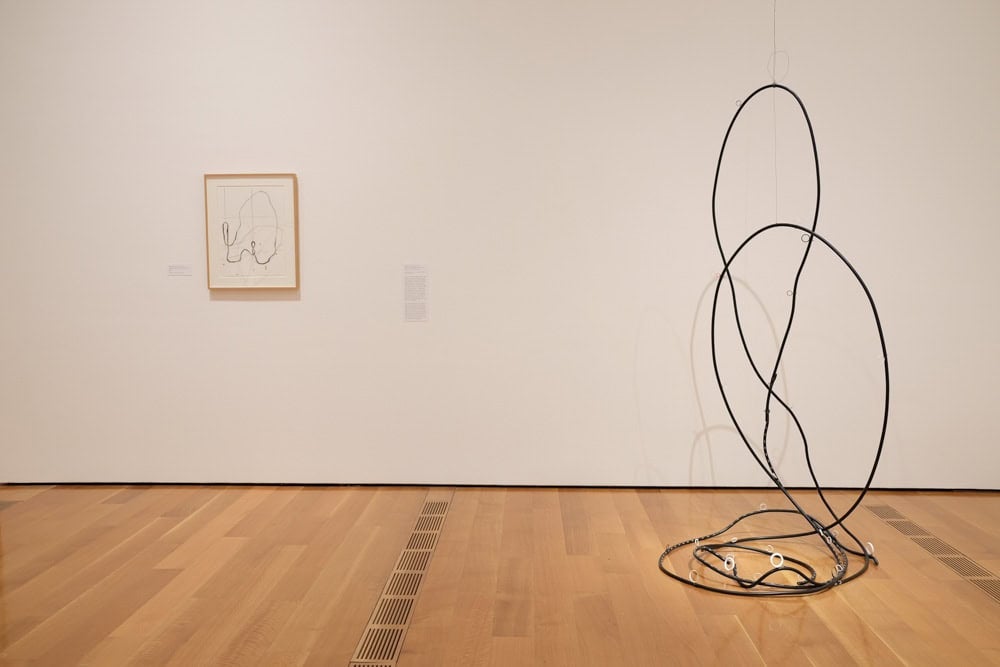
Taylor’s work from the last two decades of his life tends be abstract, though an occasional volumetric rendering appears. His materials are diverse and ordinary—found objects, plastic, wood, Plexiglas, Formica, and such. The exhibition has a looping organization that reflects the importance of circularity—both formally and conceptually—in Taylor’s work, and his tendency to return to a motif or idea repeatedly, often in a different medium, with a seemingly obsessive rigor. An example of this practice is the foam fishing net floater, a humble object that Taylor first encountered in the late ’80s when he visited Hawaii. Renderings of the small, oblong forms initially appear in an abstract 1988 etching. Porous and textured, the untitled print reads like a rocky ruin or biological form.
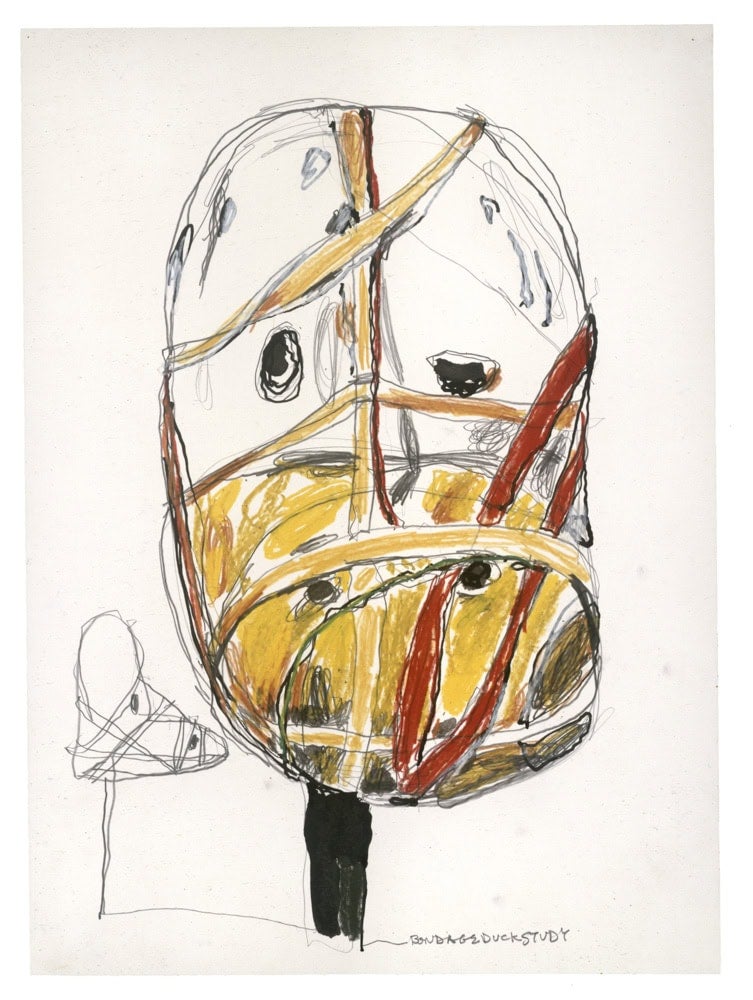
Actual foam floats are the material for mixed-media sculptures such as Floaters (Beach Bingo) on the first floor of the Anne Cox Chambers Wing or Floaters (Pill Heads) on the third floor (both 1998). Both represent the physical arc of a wave in motion as wells as other associations—the former conjuring a seaside party; the latter evoking colorful medicine. The foam float inspired the Bondage Duck series, too. These jocular sculptures and drawings use two floats, one intersecting the other at a perpendicular angle to create the illusion of a long duckbill. Sometimes, the figure is a stand-in for the artist, as is the case with the graphite self-portrait Bondage Duck in Mexico (1999), one of Taylor’s last works before his death.
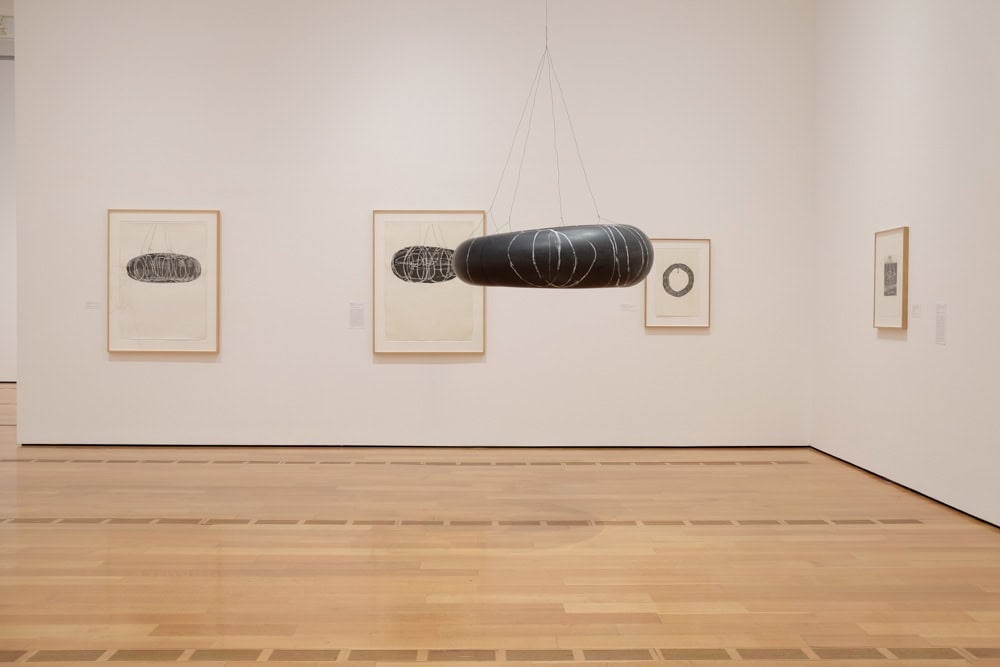
Scatalogical and smart, the “pet stain” motif—dripped and pooled pigment—runs throughout many of Taylor’s works. Pet Stain Removal Device (1989), consists of wired-together bamboo sticks and three suspended Plexiglas panels, each marked with a puddle of white paint. Strategically placed spotlights create shadows of the shape on the pedestal below. Literally lifted from the ground, the work inverts the notion of stain removal and conjures notion of apotheosis. Taylor referred to such three-dimensional work as “drawing instruments,” indicating an inherent, material flexibility. Reminiscent of a Rube Goldberg machine, the purposefully complex device epitomizes Taylor’s droll wit and purposefully a-logical methodology.
Selections from the series of 41 images called The Peabody Group combines Taylor’s interest in the pea—the subject of another series in which sculptures made of wire and bottle cap rings evoke contour line drawings—and the implicit “pee” of the pet stains works. The Peabody Group #32 (1992) utilizes a drip technique that suggests Abstract Expressionism and post-painterly abstraction. Yet, Taylor’s poured skeins of blue, green, and black are labeled in pencil. Word and image collide. Monikers “EDISON,” REEF,” or “JUDY” assign anthropomorphic identity to the biomorphic shapes. Sometimes a time stamp—“4:43”—gives a temporal specificity to the stain. One is simply identified as “ACCIDENT.” The inclusion of language breaks the formalist associations of fluid marks of earlier painters like Jackson Pollock, Helen Frankenthaler, or Morris Louis. Indeed, Taylor reminds us that these kinds of marks are shaped by language already, coded as expressionistic.
Such deconstructive engagement with modernist practice and ideology is a constant throughout Taylor’s work. Yet, it is rarely, if ever, a wholehearted rejection. A series of lithographs, like Pet Stains, 1990, hark back to Synthetic Cubism: puddles of black paint mark a stack of trompe l’oeil newspapers so as to create a tension between flat representation and illusionistic space.
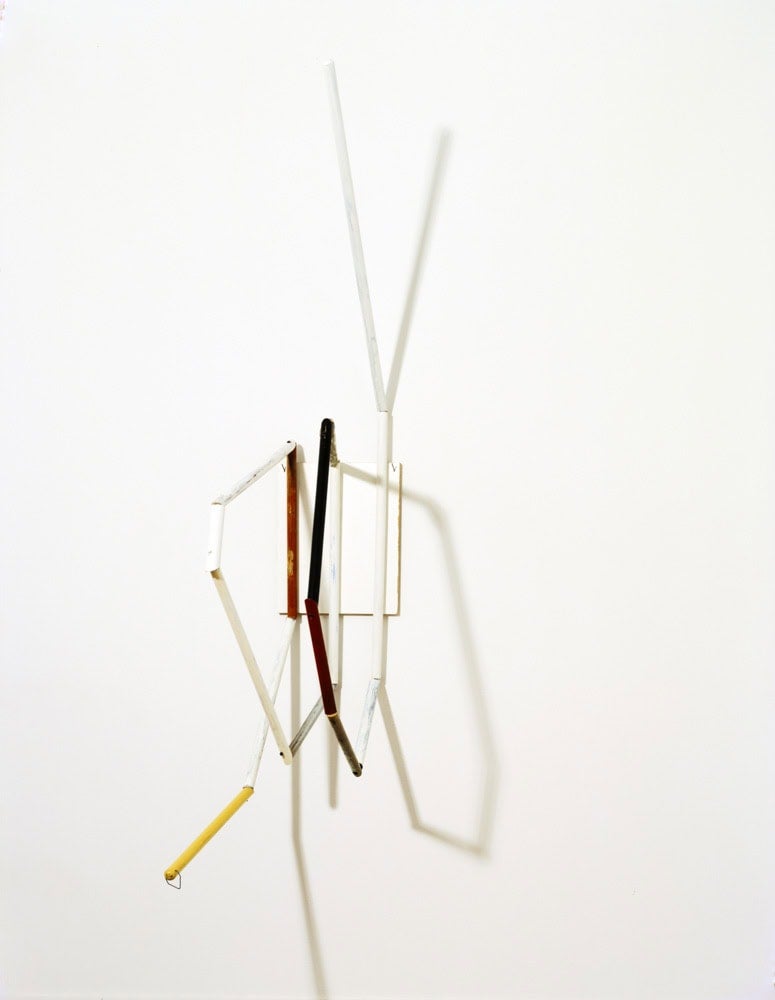
Overtly citing modernism, Distill (1988) consists of fragments of brightly colored broomsticks arranged in a loose, spiral configuration. Mounted on Formica laminate, the enamel painted broomsticks conjure kitschy domesticity and artifice—laminate is a cheap and imitative household material, and bright hues mask the natural color of the wooden broomstick. Such materials recall Dada’s embrace of found objects, but the abstract form, simple color, and punning title evoke the Dutch De Stijl movement. De Stijl sought the eradication of non-essential formal elements as exemplified by Piet Mondrian in his well-known grid compositions in primary colors, black, and white. De Stijl exemplified the modernist ideal of purity, understood in the later twentieth century to be dangerously essentialist.
In another way, Taylor embraces the spirit of De Stijl: the desire to go beyond observation to discovery of underlying structural form. X-Ray Tube (1995) is made of a suspended rubber inner tube drawn on with grease crayon. Nearby drawings and prints explore the same simple theme of X-ray vision. Repeatedly, a pattern of white ellipses marks the exterior, suggesting interior space, or the ability of the artist to see beyond the external.
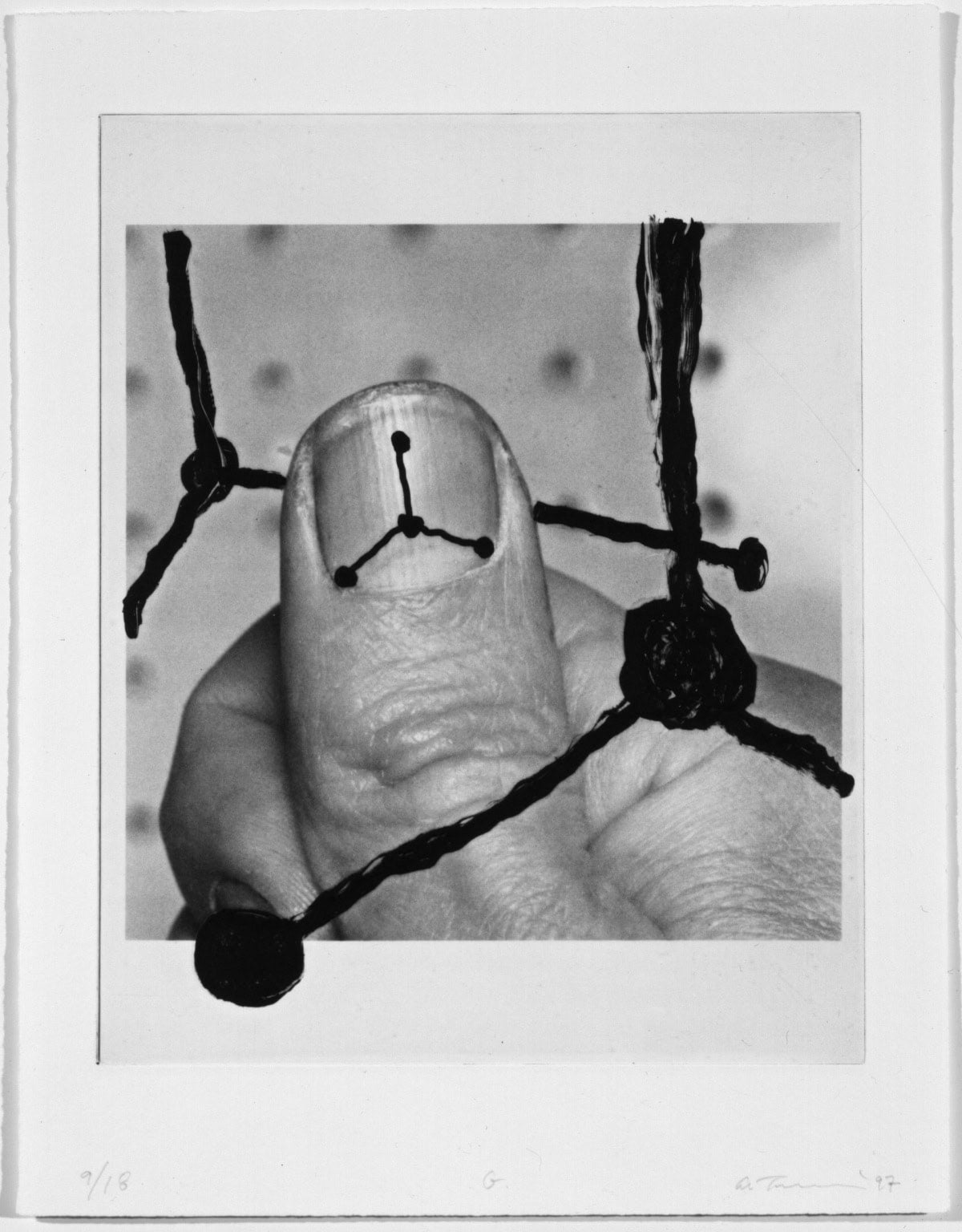
The notion of inquisitive, probing artistic vision extends to a series based on the idea of the artist’s thumbnail sketch―a quick, preparatory drawing. Taylor’s series references the actual shape of his thumbnail as well, often evoking its small scale. It includes photogravure prints, intaglio etchings, and pen and felt-tipped marker drawings such as the etching and drypoint print Thumbnail Sketch (1997). Translated into a print—a rigorous medium that requires careful planning and precision—the scribbled lines take on new meaning. Taylor’s literal take on the term is funny and shows the artist’s longstanding interest in process that is both physical and cerebral, requiring both the hand and the eye. This is Taylor at his best: funny and smart, finding a fresh twist on a mundane theme and pushing to a seemingly absurd extreme.
Taylor grappled with and expanded the lineage of modernist experimentation. This exhibition reminds us of the continuation of a transgressive strain of early 20th-century artists. Yet, more importantly, this exhibition gives deep insight into the practice of a unique and thoughtful artist who still invites the question that Taylor suggested for his gravestone and that inspired Rook’s title: “What are you looking at?”




